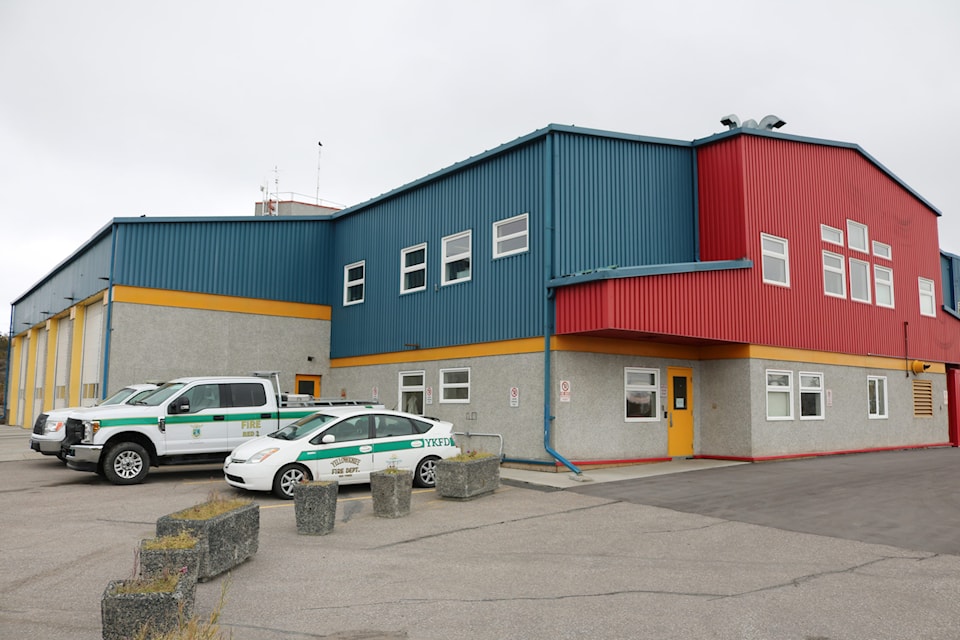Yellowknife city council will be asked to vote on the expansion and renovation of the fire hall on Monday after a study was released last week showed the building is substandard and inadequate.
A fire hall study by Dillon Consulting was presented to council at the Jan. 25 governance and priorities committee meeting and city staff are recommending council approve increasing the size of the building and making “longstanding” internal improvements to some of the facilities.
“This option will maximize the suitability of our fire hall and provide adequate space for staff, vehicles, and the apparatus we have right now,” said Sheila Bassi-Kellett, senior administrative officer.
The document poses questions for council to consider including where future fire and emergency services are deployed, especially as the city grows and as existing structural infrastructure continues to age.
According to the report, for a population of 18,800 residents in the city, the division is busy having responded to about 4,500 calls for assistance in 2019. Of those, about 87 per cent were “medically related.”
The fire hall had been built in 1990 but with its current site has outgrown the location given that it now houses a fire chief, three deputy fire chiefs who oversee 32 full-time fire fighters.
Administration’s recommendation on near-term expansion and renovations stems from four options in the report that council heard includes potential options “down the road.”
They included “collaborating” fire and emergency services at the Government of the Northwest Territories’ fire hall facility at the Yellowknife Airport off of Deh Cho Boulevard and/or building an entirely new fire station - anticipated to be located near the Niven.
“These (options) are very much under consideration into the future, however at this time, given that the existing fire hall needs renovation, focusing the renovation and expansion are best and most cost effective path going forward,” Bassi-Kellett said.
During Budget 2021 deliberations, council had decided to put a pause on some of the spending requests from the public safety for the fire division until the fire hall study was presented.
Those items included $185,000 in the expansion of a single-use bathroom on the main floor of the fire hall that would allow for multiple showers. Upon council’s approval, those funds will be rolled into a broader expansion and redesign plan to be prepared for next year’s Budget 2022.
100 Taylor Road station substandard
Council heard some of the study’s preliminary findings during those Budget 2021 deliberations which included demolishing the current building, expanding the current building or building a second fire hall elsewhere in the city. The reason for this is at least in part to ensure response times remain adequate.
“The (Taylor Road) building’s condition is substandard and any future development in the community which expands the fire protection coverage area may jeopardize YKFD’s ability to maintain response times to an acceptable level,” states the city’s committee memorandum.
The expansion of the bathroom with showers would assist first responders in what are inadequately crammed quarters at the moment, council heard.
Bassi-Kellett acknowledged that the current physical situation presents a health and safety risk to firefighters.
“We know that after a fire event, it is incredibly important for our firefighters to come back to the fire hall, to be able to get out of their equipment, get out of any equipment that's been exposed - in what is potentially some toxic fumes and toxic materials - and that they can also then shower, get clean and meet all of the standards that needs,” upon returning from a fire call,” Bassi-Kellett said.
Public Safety Director Eric Bussey, told councillors that the study examined risk factors in assessing what the city’s fire hall needs require.
“Certainly occupational health and safety is probably the most important consideration when looking through our risk lens,” Bussey said. “So those were very much on our mind and everything that we did in studying this document, and we feel comfortable with the recommendation as terms of being the most optimum.”
